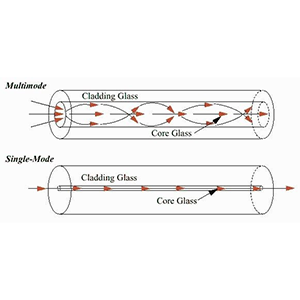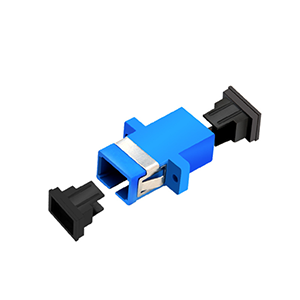Fiber optic attenuators play an important role in fiber optic communication networks. This article will explore how to ensure the best performance of fiber optic attenuators. We will first explain the working mechanism and main parameters of fiber optic attenuators and explain their role in optical power control. Next, we will analyze the main indicators of fiber optic attenuator performance, such as loss, reflection, etc., and list the key physical factors that affect these indicators.
We will provide suggestions for selecting the appropriate attenuator type based on actual application scenarios and explain the precautions during installation. In addition, we will introduce common methods for testing the performance of fiber optic attenuators and explain how to optimize system performance by adjusting the attenuation value. Finally, we will provide specific suggestions for regular maintenance and inspection of fiber optic attenuators and explain common problems that may occur during use and their countermeasures.
Basic principles and functions of fiber optic attenuators
Let me introduce you to the basic principles and functions of fiber optic attenuators in detail.
The working mechanism of the optical fiber attenuator:
The optical fiber attenuator is a passive optical device, and its main working principle is as follows:
- Precision optical attenuation film or attenuation sheet is used inside the attenuator
- When the optical signal passes through the attenuation film/sheet, a certain degree of optical energy loss will be generated
- By adjusting the position of the attenuation sheet or selecting different types of attenuation films
- Controllable attenuation of the optical signal power can be achieved
Main parameters of the optical fiber attenuator:
(1) Attenuation
- Indicates the power loss ratio of the optical signal after passing through the attenuator
- Usually expressed in dB, such as 3dB, 6dB, 10dB, etc.
(2) Working wavelength range
- The performance and characteristics of the attenuator are related to the wavelength of the optical signal
- Different types of attenuators are suitable for different wavelength ranges
(3) Insertion loss
- Refers to the inherent loss of the optical signal when it passes through the attenuator
- Ideally, the insertion loss should be minimized
The role of optical fiber attenuator in optical power control:
The main applications of optical fiber attenuator in optical communication networks are as follows:
(1) Optical power regulation
- Used to adjust the power of the optical signal to prevent the saturation of the optical detector
- Realize dynamic control of the optical signal power
(2) Isolation stage
- Place between the optical transmitter and the fiber amplifier
- Prevent signal reflection from interfering with the transmitter
(3) Link power balance
- Adjust the power difference between different optical path sections
- Ensure the power balance of the entire optical link
In short, the fiber attenuator is a simple and practical optical passive device that plays an indispensable and important role in the optical communication network.
Key factors affecting the performance of the fiber attenuator
Let me analyze the key factors affecting the performance of the fiber attenuator in detail.
Main performance indicators of optical fiber attenuator:
(1) Attenuation
- The power loss ratio of the optical signal after passing through the attenuator
- It is one of the most important performance indicators of the attenuator
(2) Insertion Loss
- Refers to the inherent loss of the optical signal when passing through the attenuator
- Ideally, the insertion loss should be minimized
(3) Return Loss
- Indicates the degree of reflection of the optical signal inside the attenuator
- The smaller the reflection loss, the better, so as not to cause signal interference
(4) Polarization Dependent Loss (PDL)
- Refers to the difference in attenuation of optical signals of different polarization states by the attenuator
- PDL should be minimized to ensure stable performance
Key physical factors affecting the above performance indicators:
(1) Attenuation medium material
- Such as the material properties and preparation process of thin film attenuation film
- Directly determines the degree of absorption and reflection of the optical signal
(2) Optical path design
- The optical path length and angle of the optical signal inside the attenuator
- Affects the coupling efficiency and reflection degree of the optical signal
(3) Interface matching
- The structure and alignment accuracy of the interface between the optical fiber and the attenuator
- Directly related to the insertion loss and reflection characteristics
(4) Temperature and humidity
- Changes in environmental temperature and humidity will affect the performance of the attenuation medium
- Thereby causing the drift of indicators such as attenuation and reflection
In summary, the performance indicators of the optical fiber attenuator are affected by a variety of physical factors, and comprehensive optimization design is required in terms of materials, structure, environment, etc.
Correct selection and installation of optical fiber attenuators
Let me introduce you to the correct selection and installation points of optical fiber attenuators in detail.
Choose the appropriate attenuator type according to the actual application scenario:
(1) Attenuation requirements
- Choose the appropriate attenuation according to the required optical power adjustment range, such as 3dB, 6dB, 10dB, etc.
(2) Working wavelength range
- Choose an attenuator model that covers the wavelength of the optical signal used
(3) Installation environment conditions
- Consider environmental factors such as temperature and humidity, and select appropriate structures and materials
(4) Interface type
- Choose a matching attenuator according to the optical fiber interface standard (LC, SC, etc.)
(5) Installation method
- Choose an installation method such as plug-in or attenuation plate according to the optical path layout
Precautions when installing the optical fiber attenuator:
(1) Clean the optical fiber interface
- Ensure that the attenuator and optical fiber interface are clean and dust-free
(2) Correctly align the interface
- Carefully adjust the alignment position of the optical fiber and attenuator
(3) Securely fix
- Use a suitable fixing method to prevent the interface from loosening
(4) Avoid excessive bending
- Avoid excessive bending when routing the optical fiber
(5) Monitor performance indicators
- Regularly check attenuation, reflection loss and other parameters
(6) Environmental protection
- Pay attention to environmental factors such as dust, moisture and shock
In short, reasonable selection and correct installation are the key to ensure the long-term stable operation of the fiber optic attenuator. In practical applications, comprehensive considerations need to be made based on specific needs.
Fiber optic attenuator testing and debugging
Let me introduce you to the performance testing and debugging methods of fiber optic attenuators in detail.
Optical fiber attenuator performance test method:
(1) Attenuation test
- Use an optical power meter to measure input and output power
- Calculate the difference between the two to get the attenuation
(2) Reflection loss test
- Use an optical time domain reflectometer (OTDR) to measure the reflected signal strength
- Calculate the reflection loss value
(3) Insertion loss test
- Measure the insertion loss when the optical path is completely disconnected
- The loss of the attenuator itself can be obtained
(4) Polarization Dependent Loss (PDL) Test
- Use polarization controller to generate optical signals with different polarization states
- The difference between the maximum and minimum attenuation values is PDL
The above test method can comprehensively evaluate the performance indicators of the optical fiber attenuator.
Optimize system performance by adjusting attenuation value:
(1) Adjust attenuation
- Appropriately adjust attenuation value according to link power measurement results
- Ensure that the receiving end power is within the optimal working range
(2) Balance optical path power
- Use multiple attenuators to adjust the power of different optical path sections
- Achieve power balance of the entire optical link
(3) Prevent optical detector saturation
- Install attenuators in front of the detector to control input power
- Avoid detector output saturation distortion
(4) Isolate inter-stage reflections
- Install an attenuator between the transmitter and the amplifier
- Reduce the interference of reflection noise on the transmitter
By properly adjusting the attenuation value, the performance and stability of the entire optical communication system can be optimized.
Maintenance and maintenance of optical fiber attenuators
Let me introduce you in detail how to effectively maintain and maintain optical fiber attenuators.
Regular maintenance inspection:
(1) Clean the optical interface
- Inspect and clean the optical fiber interface before and after each use
- Ensure that there is no dirt or dust residue
(2) Check the fixed status
- Regularly check the installation of the attenuator
- Ensure that the interface connection is firm and not loose
(3) Test performance indicators
- Regularly measure parameters such as attenuation and reflection loss
- Compare with the initial value and monitor changes
(4) Environmental condition monitoring
- Check the temperature, humidity, pollution, etc. of the working environment
- Ensure that the attenuator meets the use requirements
(5) Replace aging parts
- Regularly replace the optical attenuation film that is prone to aging
- Maintain the stability of the attenuator performance
Common problems and countermeasures:
(1) Attenuation deviation
- May be caused by changes in environmental conditions
- Need to readjust the attenuation value to correct
(2) Increased reflection loss
- May be caused by interface contamination or alignment deviation
- Need to clean the interface and readjust the alignment
(3) Increased insertion loss
- May be due to unreasonable optical path design
- Optimize optical path layout to reduce loss
(4) Long-term performance degradation
- May be due to aging of attenuation film and other reasons
- Related aging parts need to be replaced in time
Through regular maintenance inspections and timely response to problems, the optical fiber attenuator can be ensured to work stably and efficiently for a long time.
Summary
Ensuring the optimal performance of the optical fiber attenuator is crucial for high-performance and reliable optical fiber communication networks. Our company has long been focusing on the research and development and production of optical communication equipment and its supporting products, and has rich industry experience. The various types of optical fiber attenuator products we provide have reached the industry-leading level in terms of performance indicators and reliability, and can meet your demanding needs for flexible and efficient network construction.
Whether you need to deploy fiber optic attenuators in telecom operator networks, data centers, or enterprise campuses, we can provide you with customized solutions. At the same time, our professional team will provide you with a full range of technical support, including on-site surveys, solution design, and equipment installation and maintenance. Contact us now to learn more about the application of fiber optic attenuators.
Fiber Optic Attenuators FAQ
A fiber optic attenuator is a device that intentionally reduces the power or signal level of an optical signal traveling through a fiber.
Attenuators are used to prevent receiver saturation, balance optical power levels, and simulate longer fiber links in testing.
Attenuators use absorptive or reflective mechanisms to remove a controlled amount of optical power from the fiber.
Common types include fixed, variable, inline, and plug-in style attenuators for different application needs.
Factors include the input optical power, receiver sensitivity, and desired margin for optimal signal-to-noise ratio.
Ensure clean, properly terminated fiber ends, use a compatible connector type, and avoid excessive bending of the fiber.
Use an optical power meter and a stable optical source to directly measure the input and output power levels.
Issues like dirt, scratches, misalignment, and thermal/mechanical stress can impact an attenuator’s consistency.
Use approved cleaning solvents and techniques to keep the connector end faces free of contamination.
Caution is needed, as high optical power levels can potentially cause eye damage if not properly managed.



